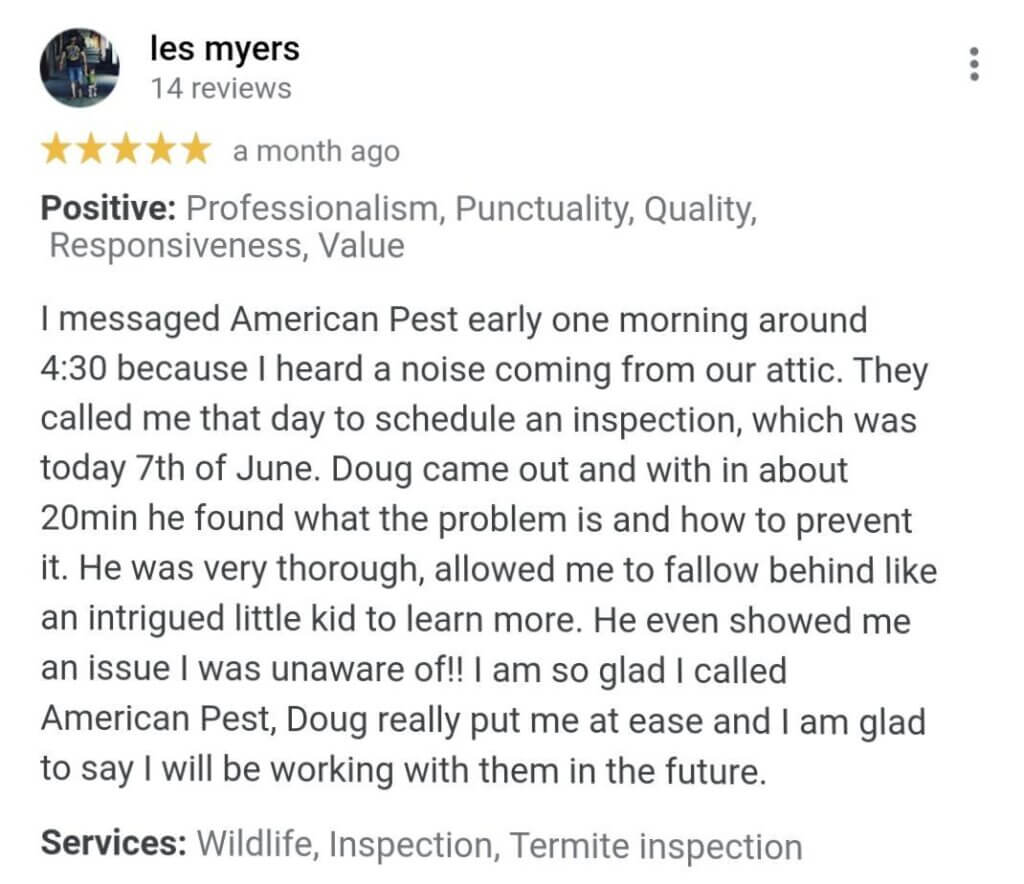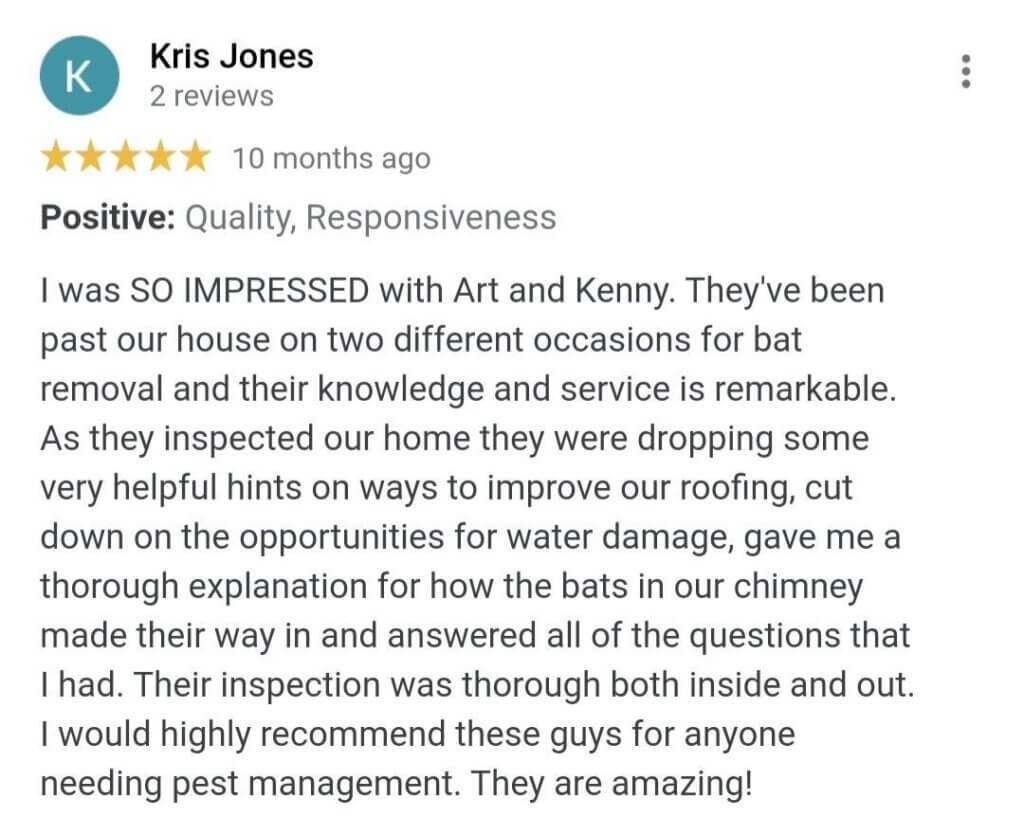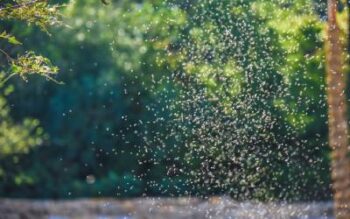Does it ever seem that every random or urgent need happens after regular business hours or on a weekend? Most of our wildlife calls or chats fall right into those time frames. Bats especially love to make themselves noticed at the most inopportune times. They are the most active at dawn and dusk. So in July, right when we are putting the kids to bed about 9:30pm or at 4:30am right when we are supposed to be in deep sleep, the bats decide it’s time for a party. The screeching and scratching can raise anyone out of bed.
Bats are known to live in caves, hollow trees, and are famous for their flights from under bridges. They truly are not picky how old a structure is or if it is a new construction project. They only care about a sheltered location to protect their roost. When a maternity roost is settled in the summer, bats love warm locations, attic spaces are perfect for this stage.
“Bats are opportunistic,” says Travis Aggson, Associate Certified Entomologist, American Pest Management, Inc., “They will take advantage of gaps behind concrete, slots between deck joists, cracks where gables meet roof lines, openings behind flashing, chimneys, the little bit of daylight between a light bulb and trim from recessed lighting, really any gap that is larger than a dime!”


Bat entry points can most times be identified easily by finding guano (bat poop) or sebum (oily, waxy substance produced by sebaceous glands) left behind from the bats as they squeeze into the openings into their roost. In other occasions, a night inspection with thermal imaging technology may be needed to determine entry points.



Bats usually mate in late fall and into winter before hibernation, they store the sperm and don’t become pregnant until spring. Pregnancy lasts for 6-9 weeks, babies are born May-June, females will normally only have 1 baby per year. Babies will suckle on their mother for 4-5 weeks before they learn to fly. During this phase it is important not to disturb the maternity roost as adults could abandon the babies in the roost. Exclusion should be delayed in June and July to prevent babies being abandoned in maternity roost.
“Bats are important to our ecological system, many don’t know that bats are pollinators and disburse seeds of plants,” says Aggson, “They are also known to eat their body weight in insects every night. It is key that we follow our exclusion policy of let them fly until after July.”
With all of the good, there are risks from bats as well, especially if they enter a home or place of business. Old dried up bat guano can release histoplasmosis from the spores from fungus that grow on the droppings. Histoplasmosis can be life threatening if inhaled by a person with a weakened immune system. Rabies, although very rare, can be carried by bats. Never approach a bat without the proper protective equipment and training, especially one that has been found active during the day. Rabies is not identifiable by visual inspection of the bat. The bat will have to be tested for a positive identification of the disease.
Exclusion is the best way to prevent bats from entering your living space. Any entry point larger than a size of a dime should be sealed. If bats have already entered your living or work space, there are steps that can be taken to release them safely and humanely using one way doors and sealing techniques. American Pest Management, Inc. Has 7 NWCOA Certified Bat Technicians trained to identify and exclude bat invasions of any magnification. If you’re interested in trying it for yourself, download our DIY Guide here or learn more about bats in our Pest Library.
You don’t have to take our word for it. Check out our Google and Facebook reviews to see what others have to say about American Pest Management, Inc!





